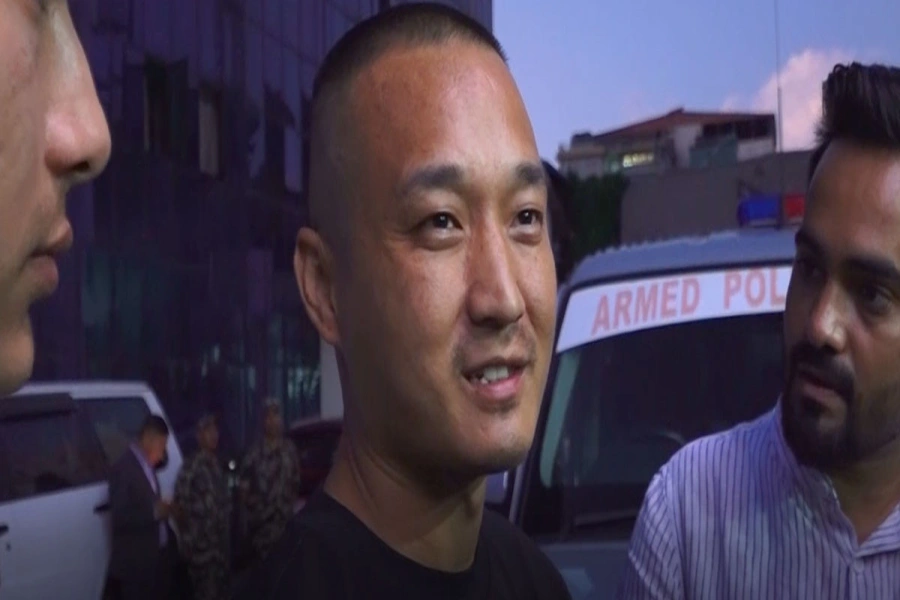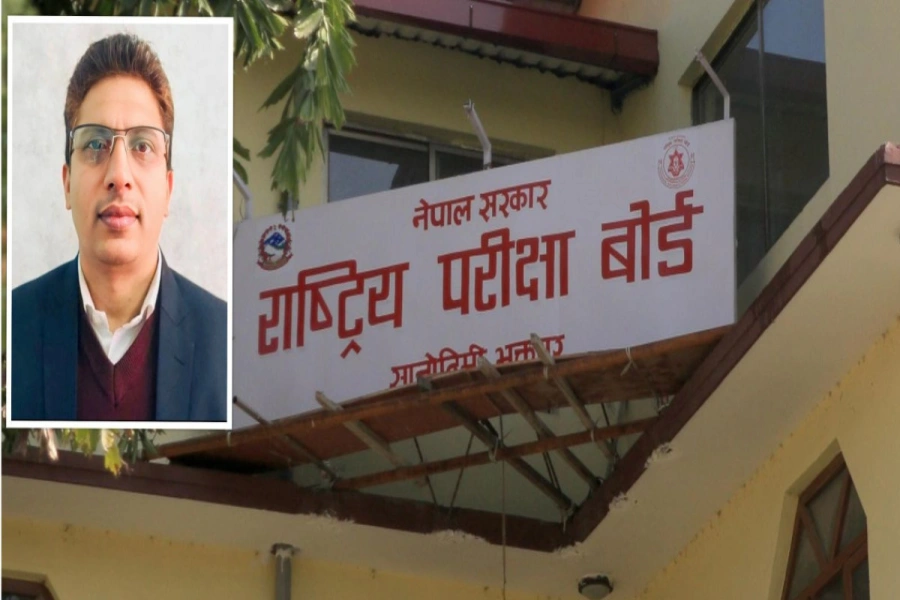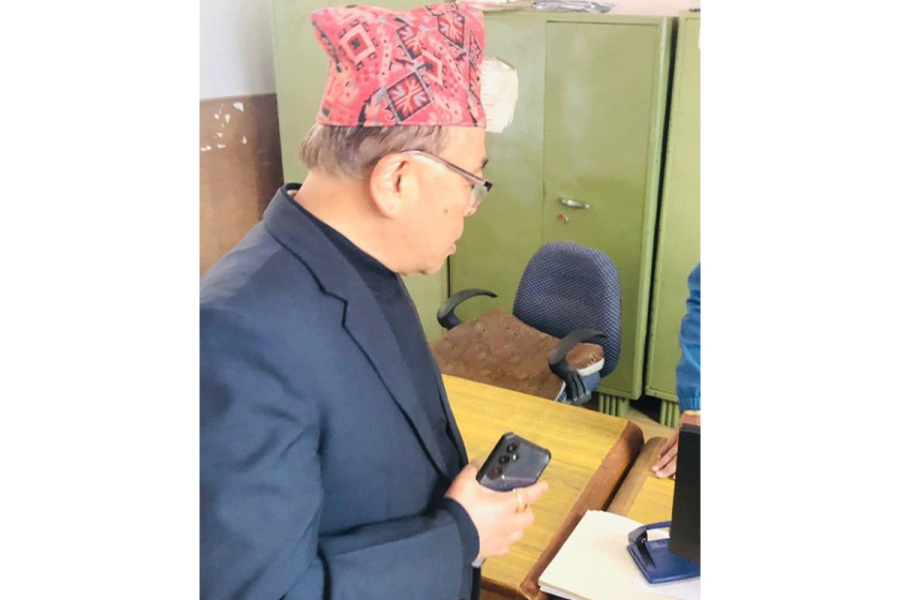KATHMANDU, August 26: Celebrities are mere lobbying agents bringing forth on-the-ground stories with painful recollections of the disaster.
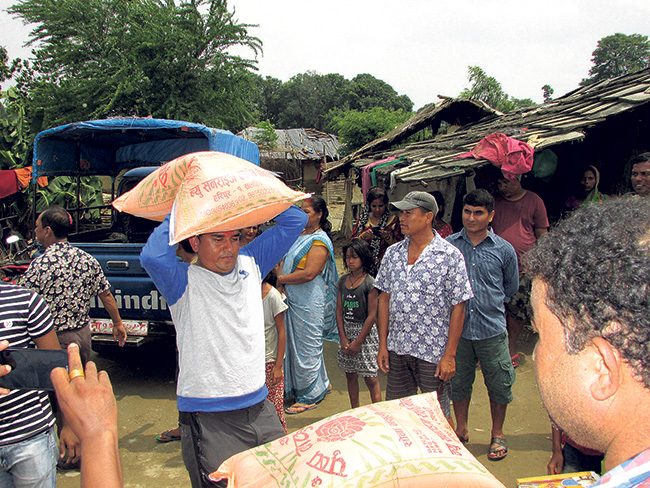 As the tarai region is mourning the loss of lives due to the recent flood, celebrities have sprung into action, faster than most, to help the survivors. Nepali celebrities have been reaching various parts of southern tarai with significant succor and bringing back stories about the degrading circumstances that the local people are forced to live in post disaster.
As the tarai region is mourning the loss of lives due to the recent flood, celebrities have sprung into action, faster than most, to help the survivors. Nepali celebrities have been reaching various parts of southern tarai with significant succor and bringing back stories about the degrading circumstances that the local people are forced to live in post disaster.
“This year we decided to ask members of the Nepal Kalakar Sangh (Nepal Artist Association) to come together in solidarity and donate for the flood victims,” said Sarita Lamichhane, general secretary of the association. Over a phone interview, Sarita mentioned that the association had collaborated closely with Maha Sanchar, led by Madan Krishna Shrestha and Hari Bansha Acharya, in collecting and distributing the relief.
Sarita also has been an integral part, in fact the organizer, of the relief distribution team. She, in collaboration with Madan Krishna and Hari Bansha, made a tedious journey to Rampura region of Saptari district to distribute relief packages.
“By the time we were back, my feet were swollen (the team had to walk a few miles from the highway to reach the destination) and I was overwrought by the sleepless night,” she said. However, she deems all these physical hurdles worth the satisfaction she received from being able to help persons in dire needs.
Survivors unite to deliver message on Holocaust remembrance

However, the feeling of satisfaction is not what she recalls most easily about the flood this year. But it is a sense of pain for the devastation faced by people in the plains. “It is true that natural disasters like earthquakes are not predictable, but we can see the tarai region being flooded every year. The least policy makers could do is strengthening their precautionary measures- like store food at safe locations and impose safer regulations for flood-prone areas,” she shared.
Sarita doesn’t believe that political leaders visiting the flood-affected regions in helicopters does any better to the flood-affected residents. “The money for helicopters could’ve been used for relief materials instead.”
“While we went there and tried our best, our help was not enough. Policy makers in the government are capable of making plausible change, and they should. Celebrities are mere lobbying agents bringing forth on-the-ground stories with painful recollection of the disaster,” she added.
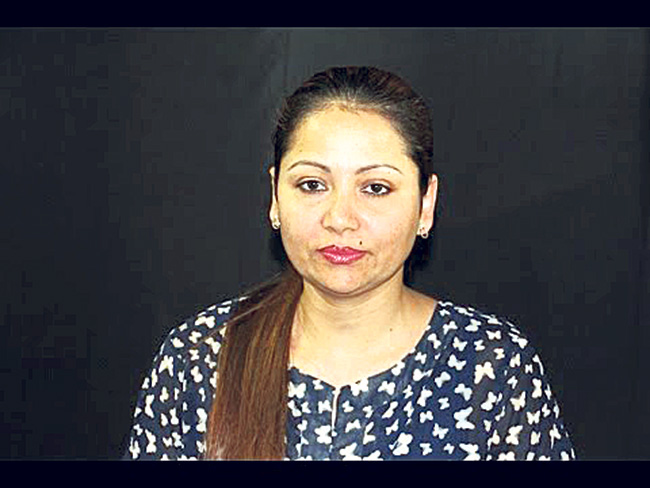
Madhav Wagle, vice president of Nepal Film Producer's Association, has a similar recollection to share. Under his leadership, the association collaborated with Sweta Khadka’s Shweta Shree Foundation and Nikita Paudel to collect around Rs 220,000 meant for flood survivors in Sarlahi.
“What prompted me to get in contact with Keshav Bhattarai, Karan Crazy and Sandip Sapkota (other team members) was the fact that we had spare relief materials from the 2015 Gorkha Earthquake,” said Madhav. The Association had few tents, tarpaulin and blankets to spare from their last fund donation activity.
“The tricky thing about donating is that even undeserving candidates sometimes line up to receive reliefs. Even well-off people feel entitled to government relief.” Madhav recalled facing such situation in one of the villages, out of the eight his team visited.
Having worked in relief distribution during the 2015 earthquake, Madhav thought it best to take help from a village representative this time to identify the real victims. “We collaborated closely with local party representatives and the police to identify genuine victims and brought them a few meters away from the village outskirts to prevent any possible hurdle.”
 Madhav further drew a parallel between the relief provided by the government and the relief package that is essential in the field. “The government provides 15 kilo rice, Rs 70 each day and a few basic essentials only if one has lost her/his house or a family member to the flood. However, there are more in need who have faced similar devastation.” His team tried to cover up for this shortcoming by providing the relief for 60 houses.
Madhav further drew a parallel between the relief provided by the government and the relief package that is essential in the field. “The government provides 15 kilo rice, Rs 70 each day and a few basic essentials only if one has lost her/his house or a family member to the flood. However, there are more in need who have faced similar devastation.” His team tried to cover up for this shortcoming by providing the relief for 60 houses.
Kunjana Ghimire, co-founder of Dhurmus Suntali Foundation, relayed a painful image of devastation in tarai as she spoke more of the foundation’s effort to mitigate flood damages. “The flood had brought with it a dead child whose parents did not have dry land to bury his body,” she recalled.
The emotional moment when it happened and the chaos that followed, is heart wrenching even today. It was not just the dead child; there were many others who lost their parents and guardians, and would have to endure challenging situations for the rest of their lives. Apart from the usual relief package, the foundation is providing school bags and educational materials to make it possible for the children to return to normalcy.
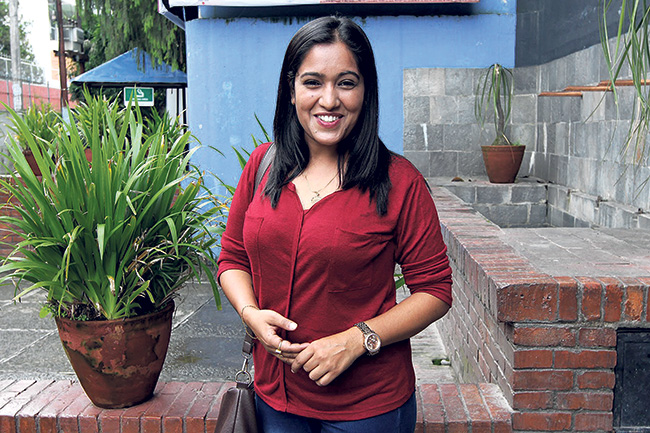 Kunjana further mentioned that her team had reached places where others had not and realized that bigger efforts from the government were essential. “We made efforts to take relief to all flood-affected regions.” In the process, the team met a woman, who had fractured her previously burnt leg while escaping the flood. “We provided medical attention to her and to others in need,” remarked Kunjana.
Kunjana further mentioned that her team had reached places where others had not and realized that bigger efforts from the government were essential. “We made efforts to take relief to all flood-affected regions.” In the process, the team met a woman, who had fractured her previously burnt leg while escaping the flood. “We provided medical attention to her and to others in need,” remarked Kunjana.
Her experience of helping flood victims has led her to believe that the post-disaster efforts made so far were temporary. “If policy makers in the government don’t work right away, we will face the same problems again the next year. There will be another dead child and many more with dead futures,” she said.
While Kunjana doesn’t criticize the efforts made by government, she hopes that it will adopt better precaution measures in the future. “Dhurmush Suntali Foundation will be on standby to assist the government whenever needed.”






